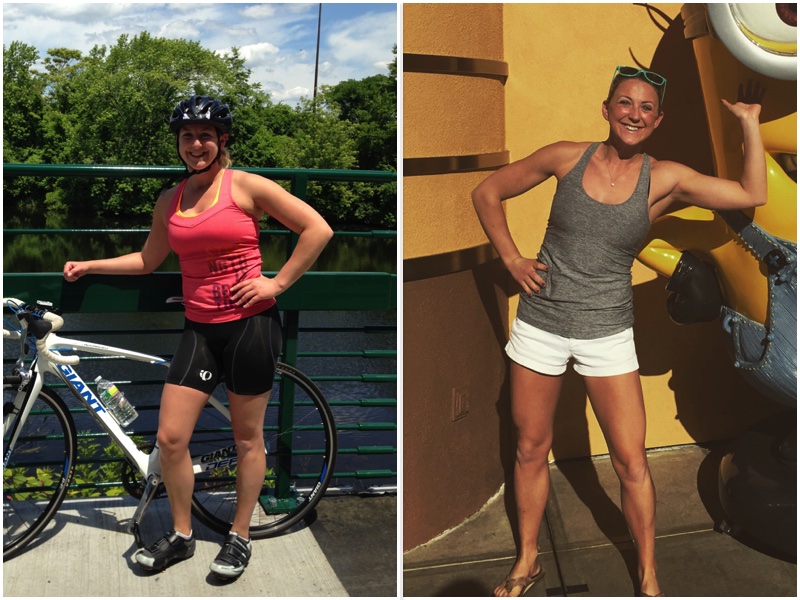Like most people on the planet I spent my $15 to go see Avengers: Age of Ultron recently.
Lisa and I had to hold off on seeing it right away because I was traveling last week, and there was NO way she was going to allow me to see it without her.
Even if I tried she’d be able to tell. Thor has Mjolnir, Quicksilver has super speed, Scarlet Witch has the ability to manipulate people’s thoughts, Tony Stark has a brilliant mind (and an Ironman suit), and Lisa has the ability to call BS if I’m lying to her.
It’s uncanny.
So alas, I had to give up a few “nerd points” and wait until the second weekend Avengers: Age of Ultron was out in theaters to go see it.
It….was…..awesome.
My good friend, John Romaniello, wrote a post earlier in the week about his lessons learned while watching The Avengers (you can check it out HERE).
On an aside: John is releasing his next product soon – the OMEGA Body Blue Print – and he has a killer video to share today titled How to Stay Fit (and Burn Fat) On the Road.
It’s the perfect answer for people who travel a lot and often allow their diet (and training) slide in between flights and hotel stops.
It’s FREE and definitely worth the watch. Check it out HERE.

Roman knows fat-loss (and sultry stares)
(NOTE: You will need to provide an email address, but I promise John won’t spam you or share your email. Because he’s not a dick.)
Back to The Avengers.
Did I mention it was awesome?
It was awesome.
I know it’s woefully unoriginal, but I’m stealing Roman’s idea and plan on sharing my own lessons learned from watching the movie.
Here you go.
1. A Team Trumps Any One Person
None of the (original) Avengers – Captain America, Ironman, Thor, Hulk, Black Widow, and Hawkeye – particularly like one another.
Put them in a room together where they’re not fighting a common enemy trying to destroy Earth and they’re bound to argue, squabble, fight, and otherwise act like whiny teenagers.
And while each one separately has their own set of unique skills and strengths which allow them to kick ass, it’s only when they combine and join forces – as a team – that they’re able to conquer immense circumstances and odds.
This parallels what we try to accomplish at Cressey Sports Performance.
Every coach on staff has their own set of strengths they bring to the table. And while I’d be lying if I sat her and said that Eric (Cressey) isn’t the ring leader and “the face of the franchise,” it’s equally false for me to sit here and state we haven’t worked – as a team – to make the brand successful with or without the namesake being around.
A few weekends ago Pete Dupuis, the Vice-President and business director of CSP, travelled with me to Kansas City to speak at The Fitness Summit.
The topic of his presentation? How Tony Took Over the Radio and Played NOTHING But Tiesto CSP Massachusetts Was Able to “Survive” and Flourish With Eric Gone.
Not the exact title, but close.
When Eric decided to open up another facility in Jupiter, FL, it was a very real concern that our numbers would drop up here in Massachusetts. Both from a foot-traffic standpoint and monetary standpoint.
As it happened: we had our most successful 6-month stretch ever……with Eric being gone.
Our foot-traffic stayed pretty much the same, and we not only saw continued double digit growth in business, but we were also able to hire TWO additional coaches (Miguel Aragoncillo and Tony Bonvechio, respectively).
I chalk it up to the entire staff working as a team to improve the athlete-client experience.
Each coach was able to “step-up” and come out of their shell (so-to-speak) and shine. What’s more, communication was placed at a premium, and we all made a concerted effort to bring up any issues or concerns we had. Everything from programming modifications and assessment protocols to scheduling and helping one another with evaluations.
It wasn’t about relying on ONE person to call the shots and be the leader. It was about all of us learning to become more of a team and playing to one another’s strength to make the customer experience better.
2. Captain America Has Pecs That Could Cut Diamonds
As we were walking home from the movie yesterday, all I heard Lisa say was how Captain America’s (Chris Evans’) pecs were so juicy.
“They’re my new favorite pecs.”
[Cue evil stare from me]
“After yours, of course, honey.”
Okay, I’ll admit it: those are some pretty damn juicy. I mean, look at em!
While I can’t speak to the exact workout regimen Chris followed to get those pecs, I can speak to one of my new favorite ways to blast your pecs.
Something I’ve been hammering lately – thanks to my own coach, Greg Robins – is something called Oxidative Bench Pressing.
It goes like this:
1. Start with a weight in the 95-135 lb range (trust me, start LIGHT).
2. Using a 2-2-2 tempo (lowering bar in 2s, pausing at the chest for 2s, then pressing back up in 2s), press for 30 seconds.
3. Rest for 30s.
4. Repeat same process for a TOTAL of 3-4 rounds.
5. REST FIVE MINUTES
6. Repeat the whole shebang again.
Add 10s each for four weeks, so by the time you reach week #4 you’ll be pressing for 60 total seconds.
You’re welcome.
3. People Will Find a Way to Complain About Anything
You’re never going to make everyone happy.
I read somewhere on the interwebz that some people were upset with Natasha Romanoff’/Black Widow’s backstory, and more specifically, were upset that the director, Joss Whedon, decided to add a bit of a romantic chemistry between Natasha (Scarlett Johansson) and Bruce Banner/Hulk (Mark Ruffalo)……
…..and that this plot detail somehow spoke to a larger issue of how women are portrayed in movies.

Concerning the Back Story: was it lame? Maybe. Personally, I didn’t think so.
Concerning the Whole “How Women Are Portrayed in Movies Argument: I can see how this has some merit, but not here.
For a quick precursor, I offer you the Bechdel Test.
Introduced by comedian Alison Bechdel, it’s a quick test that calls attention to gender inequality in movies. Basically, a movie “passes” if it meets the following criteria:
- The movie has to have at least two women in it,
- who talk to each other,
- about something besides a man.
I guess, technically, Avengers: Age of Ultron “fails” the test. But lets provide a bit of context.
You could make the argument that Joss Whedon has done MORE for female equality in movies than any other director in Hollywood. All we have to do is look at his past projects, ALL of which involve STRONG female character, often in a leading role.
Buffy the Vampire Slayer (tv)
Dollhouse (tv)
Firefly (tv), which was then made into the movie Serenity.
As well as The Avengers and now Avengers: Age of Ultron.
So, shut-up internet.
I’ve also read that some people were turned off by Black Widow’s lack of badassery in this latest movie, and that this was another gleaming example of Hollywood placating into societal norms.
Bull to the shit.
First off, I challenge anyone to write, much less DIRECT a movie of this magnitude – which included upwards of FIFTEEN main (“superhero”) characters – and not be forced to tone down a few components of the story line.
That’s fifteen actors and actresses vying for significant screen time. Good luck with that.
Second, with regards to anyone commenting on Black Widow’s lack of badassery, did you not see Captain America: The Winter Soldier?
She was busting people’s faces all over the place. For two freakin straight hours.
Lastly, and I understand this is a bit of a stretch in terms of an argument, but Scarlett Johansson was pregnant during much of the filming of this movie.
The internet shit a kettlebell a few years ago when a mother had the audacity to continue to attend CrossFit classes and lift weights during her pregnancy.
The backlash she received from ignorant naysayers was sickening. All of it despite the fact she had years of experience, nothing she was doing was new (to her), and she reduced her frequency and loads as the pregnancy progressed.
For more of my thoughts on women training through pregnancy, check out THIS post.
Imagine the outcry if people found out Scarlett was performing scissor kicks to various people’s faces – while pregnant – during filming.
AHHHHHHHHHHHHHHHHHHHHH. I don’t even want to think about it.
Needless to say, I’m sure this played into why, to some degree, Black Widow’s storyline was watered down a bit.
Relax, people.
4. Be You. Own You
Much of what makes the Avengers so interesting to watch is that each character has his or her’s own flaws.
None of them are perfect.
Just like none of us are perfect.
In the movie, while it doesn’t jive with the source material from the comics, Ultron is “created” by Tony Stark as a way to protect Earth, to serve as a “shield” from non-Earthly danger.
Unfortunately, Ultron comes to the conclusion that humans themselves are Earth’s greatest enemy, and seeks to destroy them/us.
Oops.
Without giving away too much, there’s a point in the movie where Stark tries to “right his wrong,” and seemingly goes about making the same mistake(s) that started the whole mess in the first place.
“I’m a mad scientist,” he blurts out to Dr. Bruce Banner, who’s incredulously looking on in disbelief.
Stark owns who he is. He’s unabashedly being himself.
I encourage you to do the same.
BE YOU!
Just don’t pretend to be someone you’re not.
I’ve never been a big drinker. I can count on one-hand the total number of times I drank alcohol in college; and I’d be hard pressed to surpass two-hands to point to the number of times I’ve held a drink in my hand throughout my entire life.
It’s never been a vanity thing or a health thing.
I just can’t stand the taste of alcohol. Remember those bitter-beer face commercials from back in the day?
That was me, no matter what type of alcohol touched my lips.
Sure, I got my balls busted by my teammates, and it took a while for them to understand I wasn’t ever really going to “break.” It was hard always being the one guy at the party that wasn’t drinking.
But I stuck to my guns, stayed true to myself, and it wasn’t long before it was just a common theme that “Tony didn’t drink.”
It’s an dramatic example, but whatever the case may be as it relates to YOU….don’t shy away from it.
Be you.
Always.
5. It’s Possible to Have an Erection For an Extended Amount of Time Without Having to Call a Doctor.
We’ve all seen those silly male erectile dysfunction commercials on television.
At the end of each one, when they start to list all the side-effects, one of them always tends to stand out. Always call your doctor for erections that last for an extended period of time.
I think it’s something like 2-4 hours.
Well, I’m here to tell you I had a (nerd) erection for a long-ass time yesterday and I was just fine. From the moment the first preview started – Fantastic Four to Star Wars to Batman vs. Superman to Jurassic World – until the end of the mid-credit “final scene” featuring Thanos, I had a massive boner.
Can you blame a nerd?
Did I mention this movie was awesome?
 I felt this was an excellent perspective given by Mike. When working with beginner (and even many intermediate) lifters, and those not remotely interested in deadlifting a bulldozer, advanced periodization programs and techniques probably aren’t as necessary as we’ve been lead to believe.
I felt this was an excellent perspective given by Mike. When working with beginner (and even many intermediate) lifters, and those not remotely interested in deadlifting a bulldozer, advanced periodization programs and techniques probably aren’t as necessary as we’ve been lead to believe.







 Sports Performance Strength Camp officially launched three years ago and started with only two clients.
Sports Performance Strength Camp officially launched three years ago and started with only two clients.



